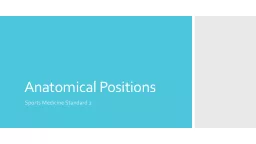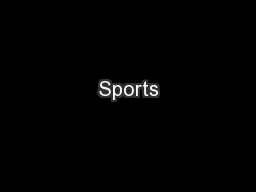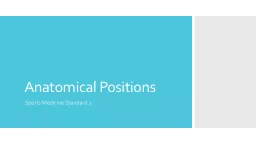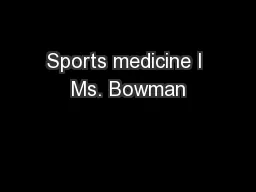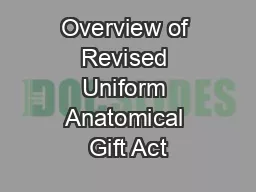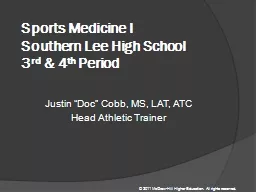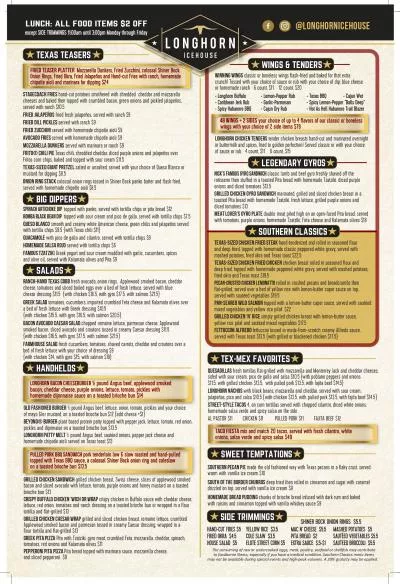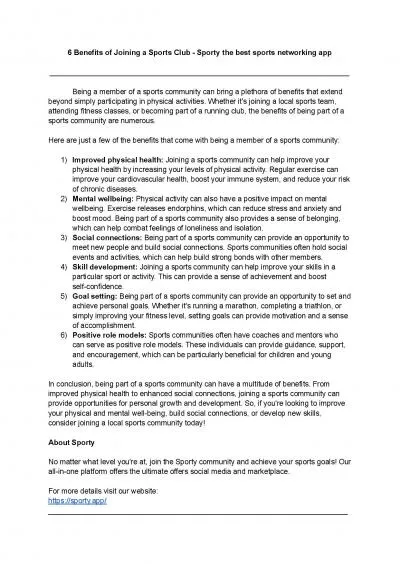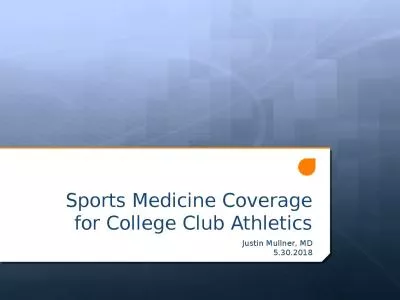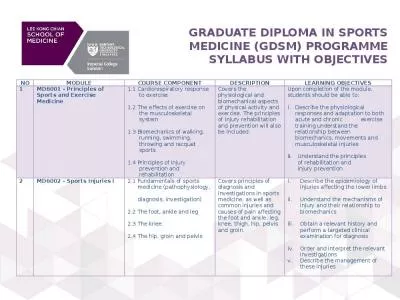PPT-Anatomical Positions Sports Medicine Standard 2
Author : trish-goza | Published Date : 2018-03-21
What is Anatomy and Physiology Anatomy is the study of structure Derived from Greek and means to cut up or to cut open Physiology is the study of the functions of
Presentation Embed Code
Download Presentation
Download Presentation The PPT/PDF document "Anatomical Positions Sports Medicine Sta..." is the property of its rightful owner. Permission is granted to download and print the materials on this website for personal, non-commercial use only, and to display it on your personal computer provided you do not modify the materials and that you retain all copyright notices contained in the materials. By downloading content from our website, you accept the terms of this agreement.
Anatomical Positions Sports Medicine Standard 2: Transcript
Download Rules Of Document
"Anatomical Positions Sports Medicine Standard 2"The content belongs to its owner. You may download and print it for personal use, without modification, and keep all copyright notices. By downloading, you agree to these terms.
Related Documents

